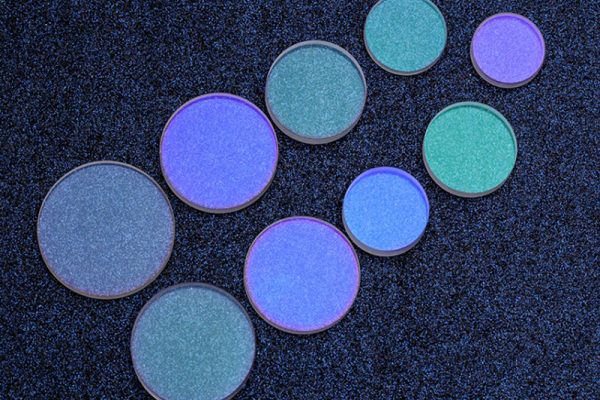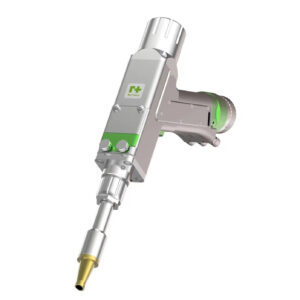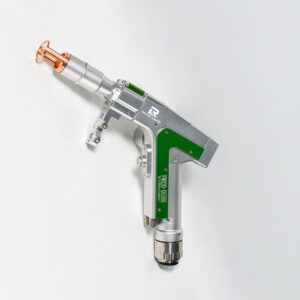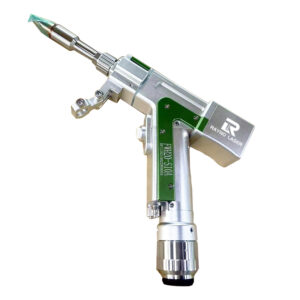Outline:
- Why does the protective lens get damaged?
- How to adjust gas pressure for lens protection?
- What welding settings help reduce lens contamination?
- How to optimize materials and welding wire selection?
- Best practices for extending lens lifespan.
1. Why Does the Protective Lens Get Damaged?
The protective lens in a handheld laser welding machine is a crucial component that safeguards the optical system from contamination and damage. However, frequent exposure to welding splatter, high temperatures, and improper gas or power settings can shorten its lifespan. The main causes of lens damage include:
- Incorrect gas pressure: Too high or too low pressure can lead to lens contamination.
- Excessive welding splatter: Occurs when the settings are not optimized for certain materials.
- Improper focus and power settings: Can cause overheating and rapid degradation of the lens.
- Lack of maintenance: Dust and debris accumulation affect lens clarity and performance.
Addressing these factors will help extend the lens’s lifespan and improve welding quality.
2. How to Adjust Gas Pressure for Lens Protection?
Proper gas pressure prevents splatter from reaching the lens while ensuring smooth welding. Follow these guidelines:
- Recommended pressure range: Maintain gas pressure between 0.15–0.3 MPa for optimal performance.
- Use clean, dry air: If using compressed air, install an oil-water separator to remove contaminants.
- Avoid excessive pressure: Too high pressure can cause turbulence and affect the weld pool.
By ensuring a stable and clean gas supply, you can reduce splatter buildup and protect the lens from damage.
3. What Welding Settings Help Reduce Lens Contamination?
Welding thick materials at high power increases the risk of splatter. To minimize lens damage:
- Set appropriate oscillation frequency: For thick plates at high power, set the oscillation frequency to around 30 Hz to stabilize the weld pool.
- Use defocusing techniques: Some materials, like carbon steel with paint coatings, require slight defocusing to reduce splatter.
- Ensure correct power settings:
- If using a 1500W laser, set the rated power in the equipment parameters to 1500W for precise control.
Adjusting these settings based on the material type ensures a cleaner weld and less contamination on the protective lens.
4. How to Optimize Materials and Welding Wire Selection?
Using the right materials and welding wire prevents excessive heat buildup and splatter:
- Use pre-defined process libraries for common materials like carbon steel, stainless steel, and aluminum alloys.
- For smooth, thin plates, adjust parameters based on thickness.
- Match the welding wire diameter to the plate thickness to prevent deformation or excessive penetration.
Recommended Welding Wire Selection:
| Welding Wire Diameter | Recommended Plate Thickness |
|---|---|
| 0.8mm | 1.0mm – 1.5mm |
| 1.0mm | 2.0mm – 2.5mm |
| 1.2mm | 3.0mm – 3.5mm |
| 1.6mm | 4.0mm – 5.0mm |
Using the correct wire ensures a more stable welding process, reducing splatter and lens contamination.
5. Best Practices for Extending Lens Lifespan
To keep your protective lens in good condition:
✅ Perform regular inspections: Check for dirt or scratches before each use.
✅ Clean the lens properly: Use non-abrasive, lint-free wipes and avoid touching the surface directly.
✅ Replace damaged lenses promptly: A compromised lens affects laser efficiency and welding quality.
✅ Maintain proper ventilation: Ensuring good airflow reduces fume buildup, preventing lens contamination.
By following these best practices, you can significantly extend the lifespan of your handheld laser welder’s protective lens and improve overall welding performance.
Protecting the lens in a handheld laser welding machine is essential for maintaining high welding efficiency and reducing unnecessary maintenance costs. By adjusting gas pressure, optimizing welding settings, choosing the right materials, and following best practices, users can minimize lens contamination and damage. Implementing these strategies will enhance the machine’s performance and longevity, ensuring a more stable and efficient welding experience. Please contact us freely if you need further instruction of the laser lens usages.




